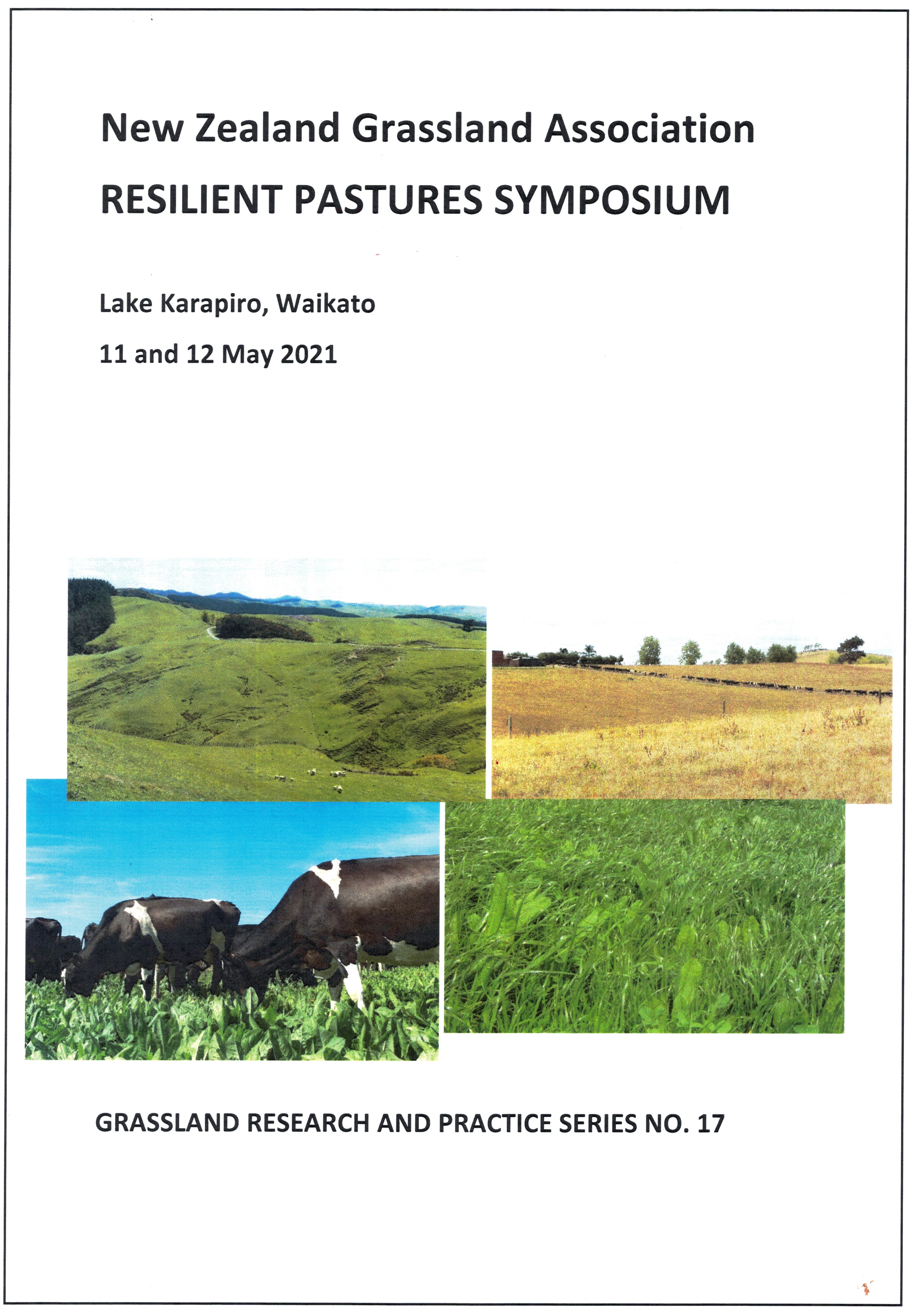Pasture resilience reflects differences in root and shoot responses to defoliation, and water and nitrogen deficits
DOI:
https://doi.org/10.33584/rps.17.2021.3472Keywords:
alfalfa, Lolium perenne L., Medicago sativa L., plant development, plant growthAbstract
The yield of a pasture is directly proportional to the amount of light plants intercept and allocate to different organs. When plants are carbon (C) limited, due to defoliation, they allocate more C preferentially to shoots to restore leaf area. In contrast, water and nitrogen (N) limitations lead to a greater allocation of C to roots. Changes in the root:shoot ratio therefore reflect changes in C and N partitioning and indicate their relative priority. A major factor that influences plant responses to stress is their ability to store and remobilise reserves to restore leaf area. Species with tap roots, like lucerne, have a large potential C and N storage capacity that is utilised seasonally for storage and remobilisation. This has been used to develop seasonally based grazing management rules. Similarly, recommendations to graze perennial ryegrass at the 2- or 3-leaf stage are based on the balance between maximizing growth rates and the need to replenish water-soluble carbohydrate reserves. However, perennial ryegrass has lower levels of perennial reserves than other grass species. This reduces its resilience to concurrent water deficits or N deficiency. Under these conditions maintaining the recommended 3-leaf grazing intervals and/or leaving higher post-grazing pasture masses are recommended to assist canopy recovery. Other grass species, such as cocksfoot and tall fescue, provide more resilience, particularly in response to water deficits.
Downloads
Published
How to Cite
Issue
Section
License
Copyright
This work is licensed under a Creative Commons Attribution-Non Commercial-NoDerivatives 4.0 International License. Rights granted to the New Zealand Grassland Association through this agreement are non-exclusive. You are free to publish the work(s) elsewhere and no ownership is assumed by the NZGA when storing or curating an electronic version of the work(s). The author(s) will receive no monetary return from the Association for the use of material contained in the manuscript. If I am one of several co-authors, I hereby confirm that I am authorized by my co-authors to grant this Licence as their agent on their behalf. For the avoidance of doubt, this includes the rights to supply the article in electronic and online forms and systems.


